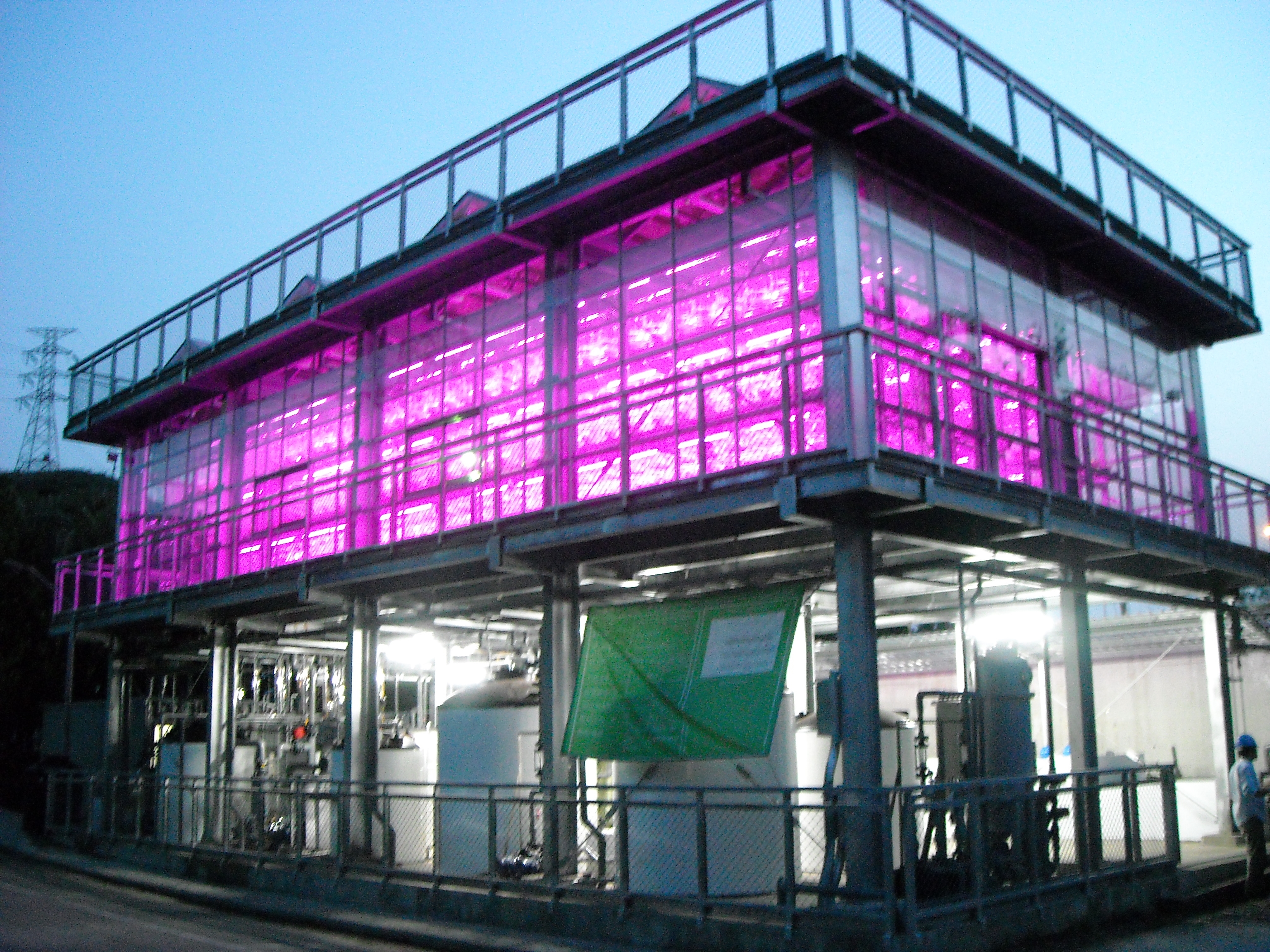Renewable resources:do not destroy its regenerative capacity.
Non – renewable resources:should play its maximum effectiveness.
Human protection of environmental resources is nothing but a passive act .After all, the capacity for natural resources to regenerate is limited, while human development, and the demand for resources is infinite.
Recycling of resources is a last resort, under the premise of not destroying the capacity of natural regeneration, USAN is committed to the introduction of scientific and technological capabilities to accelerate the cycle of renewable resources, thus increasing the production of resources to meet the needs of human development.
USAN for several years committed to algae culture technology research and development, using carbon dioxide contained in the power plant exhaust as a carbon source for the algae’s growth, in addition to reducing greenhouse gas emissions (CO2), but also the production of useful biomass.
The company cooperated with Taiwan Power Company to produce photosynthetic reactor model plant for algae culture, in order to implement the idea of maximizing the application of resources. And to collect the relevant data and supporting technologies needed to promote bio-energy technology. Continuing with the results of cooperation with Taiwan Power Company, the micro-algae carbon sequestration, USAN improves the system, and provides the oil refining industry, energy industry, metallurgical chain industry, iron and steel industry, cement industry, ceramics, glass and paper industry and other regulated EU trade directive control of the high pollution industry with carbon sequestration and carbon reduction services.

The rapid development of the global economy has led to the large consumption of petrochemical energy, leading to “energy shortage" and “global warming" becoming the greatest challenge for the sustainable development of human society in the 21st century. “Energy saving and carbon reduction" has become the most important economic and environmental protection policy in various countries. In recent years, the Middle East and Latin America and other major oil-producing countries suffer from political turmoil, the US dollar exchange rate shocks in the event of a substantial devaluation, leading to rising oil prices, countries are committed to finding alternative energy, or improve energy use efficiency to reduce the dependence on petrochemical energy. In addition, in response to global climate and environmental changes, and to comply with the Kyoto Protocol on greenhouse gas emission reduction restrictions, countries have to actively invest in clean, efficient, diversified renewable energy development and formulation of relevant environmental protection policies.
Energy can be divided into non-renewable energy and renewable energy two categories. Renewable energy includes hydropower, solar energy, wind energy, geothermal energy, biomass energy, ocean energy (ocean tidal energy, ocean temperature energy conversion), super-atmospheric solar energy, artificial wind energy, bio-hydrogen and so on. . In recent years, the development of various emerging energy has greatly improved the progress of the trend, although most of the renewable energy is still in the research and development stage, and there are many technical difficulties yet to overcome, this has not stopped governments and private corporations from further investments. For example, Germany legislates to purchase electricity with a price higher than the market price of renewable energy power, making the German renewable energy market expand in recent years, this also led other European countries to follow suit. Japan has implemented the Renewable Portfolio Standard (RPS) obligations of the electrical sector since 2003, which is a so-called net-metering system, which stipulates that a certain percentage of the electricity supplied by domestic electric utilities must be renewable energy and allow residential installations Solar photovoltaic equipment, while the excess electricity is sold to the power company at market prices, which makes the Japanese renewable energy industry, especially the solar photovoltaic industry, to flourish in recent years. California has also required RPS regulations, California requires domestic electricity sales industry to have an 1% of annual increase in renewable energy purchase rate until renewable energy accounts for 20% of its power sales, to encourage users to install renewable energy power generation equipment.
Renewable energy and fuel cell and other new energy industries, due to their low greenhouse gas emissions characteristics, governments want to use rewarding incentives to promote its development. Renewable energy has relatively lower greenhouse gas emissions than conventional power plants. For each generation of 1kwh of electricity, wind power generation on average generates 1 kg of conventional coal-fired power generation of CO2, 3.5 grams of NOx, and 6.1 grams of SO2 and other pollutants emissions less than conventional coal power generation; The generation of electricity with fuel cells can reduce carbon dioxide emissions by 290 grams, which makes it almost half the CO2 emissions of thermal power plants, and it also has a power generation efficiency as high as 64% , which is also the double of thermal power generation plant’s efficiency. Although the current renewable energy power generation costs are still high: the wind power generation costs about 4 to 10 cents / kW, the sun power generation costs about 16 to 27 cents / kWh, fuel cells power generation costs about 11 to 14 cents / kWh, this is five cents higher than the average wholesale price per kilowatt, but with the continuous upgrading of new energy technologies, the future of its power generation costs and the gap between the traditional fossil fuels will be reduced, the market competitiveness will be relatively improved, and it can become a highly cost-effective alternative energy.


